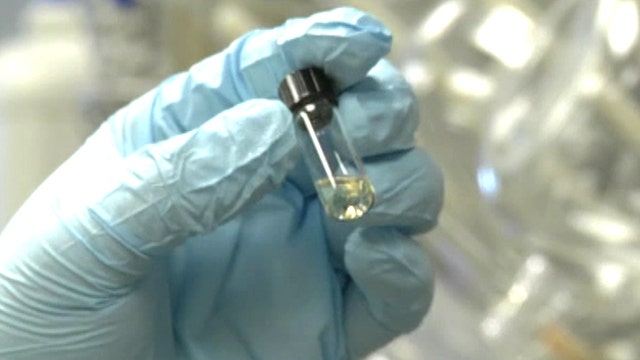Human testing of an Ebola vaccine?
A bio-pharmaceutical company in Ames, Iowa has been given the go-ahead and funding from a branch of the Department of Defense to work toward human testing of an Ebola vaccine
The recent Ebola outbreak and other biological and medical threats underscore the fact that it is US military docs who are on the frontline in keeping America safe. The US Army Medical Research Institute of Infectious Diseases (USAMRIID) and the Department of Defense’s Defense Threat Reduction Agency (DTRA) have for years been developing the most promising technologies to counter biological threats.
In fact, remember the experimental Ebola drug that was just recently given to both Dr. Kent Brantly and missionary Nancy Writebol? USAMRIID played a key role in its development. In fact, on August 21, 2013, USAMRIID first reported that scientists had successfully treated the Ebola virus in infected animals following the onset of disease symptoms. This was the same drug given to Brantly and Writebol.
And just last month, the first case of the Chikungunya virus contracted in the US was reported. Well, guess who developed the first known Chikungunya vaccine back in the mid-1980s? You got it – the Army medical docs at USAMRIID, located at Fort Detrick.
It’s not just deadly viruses and other biological threats that the US Military physicians have been working on for years to develop countermeasures to keep America safe. They have also been pioneers in telemedicine, brain health, wound care, cancer immunotherapy, and even a radiation protection treatment in the event of a nuclear attack or a dirty bomb scenario. With a focus on advanced and applied research, they are about results and successfully treating patients now.
This week, these military docs who have dedicated their lives to keeping America safe will come together again for the annual Military Health Science Research Symposium (MHSRS) in Fort Lauderdale from August 18-21. What began some 17 years ago as a conference focusing primarily on the treatment and care of the combat wounded, has evolved to cover basically all facets of military medicine, with representation from the Army, Navy and Air Force.
Also, our NATO allies are now beginning to show up in bigger numbers each year. They realize that if you want to save lives today, you look to US Military medicine.
In recent years, MHSRS has led to significant advancements in military medicine. In fact, it directly led to the inception of the Armed Forces Institute of Regenerative Medicine (AFIRM) to help those who have lost their limbs in combat, blood biomarkers for traumatic brain injury (TBI), advances in reducing massive hemorrhage, and many other medical breakthroughs. In fact, the joint US Department of Defense and NCAA concussion research initiative recently announced by President Obama would not have happened without the years of research and groundwork laid by the US Military’s Combat Casualty Care Directorate at Fort Detrick. The advancements they’ve made in brain health will benefit Americans, both in and out of uniform, for many years to come.
MHSRS knows how to run a government conference the right way – with both the warfighter and taxpayer in mind. By working with the private sector and our NATO allies, the entire cost for the 2012 Conference came to $8.50! Other US Government departments and agencies could learn from the MHSRS’s example.
Following the 9/11 attacks on America, there was a heightened sense of awareness by all of us. Our government conducted training events to plan for mass casualty scenarios. President Bush’s Transformational Medical Technology Initiative (TMTI) at DTRA paved the way to speed up the development time for new countermeasures against biological threats. We need that same level of commitment once again.
Unfortunately, the threats have not subsided. The world is an even more dangerous place today than it was immediately following 9/11. As a people, though, we’ve let our guard down and have taken too much for granted. Thankfully, the US Military has remained on the frontline. Not only are our soldiers protecting our national security interests, but our military docs are ensuring that we have the medical capability and technology to keep America safe.





















